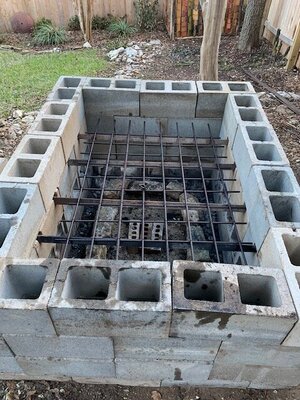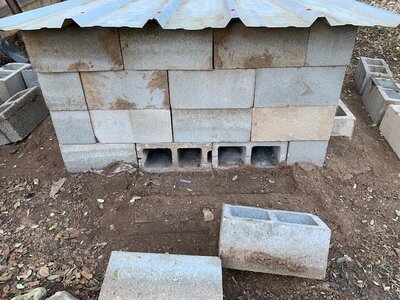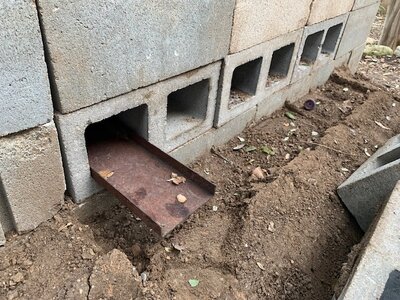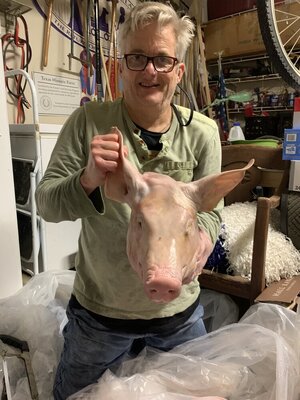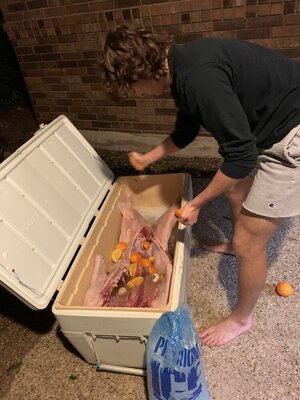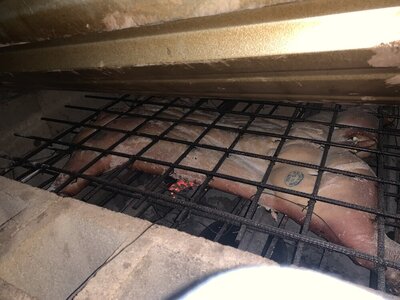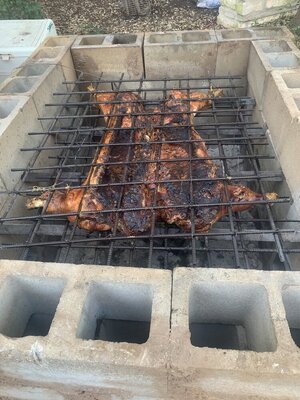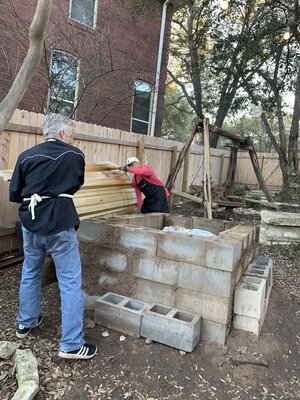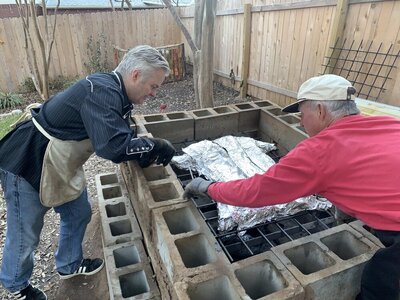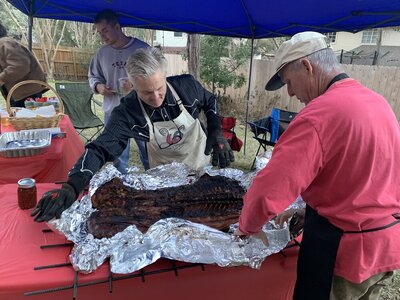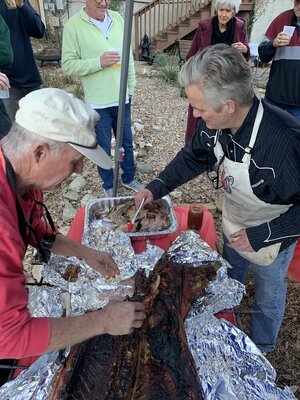My plan is a roast and not a smoke so I'm stepping away from the fire box idea. I like the idea though of feeding the fire from steel rain gutter material run down the sides. If I went this route with the steel rain gutter I suppose I could just turn one or two blocks per side to open the holes to allow for airflow and then just have openings big enough to have the rain gutters stick out from the pit a bit.I have no great solution to re-fueling pig roast pits. I think you have to, through experience, learn to slightly over-fuel and then live with some wasted coals when you pull your food. You can control temp by adjusting air flow (by changing the area of intake and exhaust ports) but when the fire is out of fuel, it's Game Over.
That's the big advantage to building a firebox outside your pit. You can keep adding fuel if you run low (and even shovel some out if you over do it) if normal air flows aren't working for you.
One possible solution to re-fueling in your style of pit is to include some steel rain gutter troughs that feed the fire every few feet and exit low through the side walls. They're plugged when your'e cooking but should you run out of fire you can feed in fresh coals from the outside with just a steel rod (rebar) as a pusher. They'll slide easy
My metal cover does have openings. Should these be filled in or does this help with venting?


